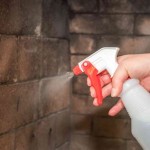Fireplace Hearth Slab: A Comprehensive Guide
The fireplace hearth slab is a fundamental component of a fireplace, providing essential safety, structural support, and aesthetic appeal to the overall fire feature. Understanding its purpose, materials, installation, and maintenance is crucial for homeowners looking to build a new fireplace or renovate an existing one. This article provides a comprehensive overview of fireplace hearth slabs, covering various aspects from their functional roles to selection criteria and best practices.
Hearth slabs serve multiple crucial functions. First and foremost, they act as a non-combustible barrier, protecting the surrounding flooring and structure from sparks, embers, and radiant heat emanating from the firebox. This is particularly important for homes with wooden floors, carpets, or other flammable materials near the fireplace. Furthermore, the hearth slab provides structural support for the fireplace insert or firebox, distributing the weight evenly and preventing potential damage to the floor or foundation below. Finally, the hearth slab contributes significantly to the aesthetic design of the fireplace, serving as a visual anchor and complementing the style of the firebox, mantel, and surrounding décor. The choice of hearth slab material, size, and shape can dramatically impact the overall appearance of the fireplace.
Understanding the Purpose and Function of a Hearth Slab
The primary purpose of a hearth slab is to protect combustible materials from the intense heat produced by a fireplace. Building codes typically mandate specific clearances between the firebox opening and any combustible surfaces. The hearth slab extends this protection zone, ensuring that sparks and embers that escape the firebox do not ignite nearby flooring, walls, or furniture. The size and configuration of the hearth slab are often dictated by these building codes, which vary depending on the size and type of fireplace. A larger fireplace opening generally requires a larger hearth to provide adequate protection.
Beyond fire safety, the hearth slab also provides structural support. Fireplaces, especially those built with stone or brick, can be quite heavy. The hearth slab distributes this weight across a larger area, preventing concentrated pressure on the floor joists or foundation. This is particularly important in older homes where the floor structure may not be designed to support significant point loads. A properly installed hearth slab ensures the long-term structural integrity of the fireplace and prevents potential settling or cracking of the surrounding floor.
Aesthetically, the hearth slab is a key design element that can significantly enhance the visual appeal of the fireplace. It provides a platform that visually grounds the fireplace and creates a focal point in the room. The choice of material, color, texture, and shape of the hearth slab can complement the overall style of the fireplace and the surrounding room decor. From sleek and modern granite to rustic and traditional slate, various materials offer distinct aesthetic qualities that can be tailored to individual preferences.
Materials Commonly Used for Hearth Slabs
The selection of materials for a hearth slab is critical, affecting both its functionality and aesthetic appeal. Several materials are commonly used, each with its own set of advantages and disadvantages. These materials typically include stone, brick, tile, and concrete. Each material boasts specific properties related to heat resistance, durability, and visual qualities.
Stone is a popular choice for hearth slabs due to its natural beauty, durability, and excellent heat resistance. Common stone options include granite, marble, slate, and limestone. Granite is known for its hardness and resistance to staining and scratching, making it a practical choice for high-traffic areas. Marble offers a more luxurious look with its intricate veining and polished surface, but it is more susceptible to staining and etching. Slate provides a rustic and textured appearance with excellent heat resistance, while limestone offers a softer, more natural look with a slight variation in color and texture.
Brick is another traditional material that is often used for hearth slabs. It offers a classic and timeless look, especially in traditional or rustic-style homes. Brick is relatively affordable and provides good heat resistance, but it can be more porous than stone and may require sealing to prevent staining. Different types of brick are available, including clay brick and firebrick. Firebrick is specifically designed to withstand extremely high temperatures and is often used in the firebox itself, but it can also be used for the hearth slab to provide maximum heat protection.
Tile is a versatile option that allows for a wide range of design possibilities. Ceramic tile and porcelain tile are both commonly used for hearth slabs, offering a variety of colors, patterns, and sizes. Tile is relatively easy to clean and maintain, and it is resistant to scratching and staining. However, it is important to choose a tile that is rated for high-temperature applications to ensure it can withstand the heat from the fireplace. The grout lines between tiles can also be a potential weak point, as they can crack or crumble over time. Epoxy grout is often recommended for hearth slabs as it is more durable and resistant to staining than traditional cement grout.
Concrete is a more modern option that offers a clean and contemporary look. Concrete hearth slabs can be poured in place or pre-cast, and they can be stained or polished to achieve a variety of finishes. Concrete is very durable and can withstand high temperatures, but it is also porous and may require sealing to prevent staining. Concrete hearth slabs can be customized to fit any size or shape, making them a versatile choice for unique fireplace designs.
Installation Considerations and Best Practices
Proper installation is crucial for ensuring the safety, functionality, and longevity of a fireplace hearth slab. The installation process typically involves preparing the subfloor, laying a mortar bed, setting the hearth slab, and grouting or sealing the joints. Adhering to best practices during each step is essential for achieving a durable and aesthetically pleasing result.
Before installing the hearth slab, it is important to ensure that the subfloor is level, stable, and capable of supporting the weight of the hearth slab and the fireplace insert or firebox. The subfloor may need to be reinforced or repaired if it is damaged or inadequate. A layer of cement board or backer board is often installed over the subfloor to provide a smooth and stable surface for the mortar bed. This creates a fire-resistant base and ensures proper adhesion of the mortar.
The mortar bed is a critical component of the installation process, providing a level and supportive base for the hearth slab. A thin-set mortar is typically used, which is a mixture of cement, sand, and additives that provides excellent adhesion and flexibility. The mortar should be mixed according to the manufacturer's instructions and applied evenly to the subfloor using a notched trowel. The hearth slab is then carefully placed onto the mortar bed and gently pressed into place to ensure good contact and proper leveling.
After the hearth slab has been set, the joints between the slabs are filled with grout. The type of grout used will depend on the material of the hearth slab and the desired aesthetic. Cement grout is a common choice, but epoxy grout is often recommended for its superior durability and resistance to staining. The grout should be applied carefully to fill all the joints completely, and any excess grout should be removed immediately. Once the grout has cured, it should be sealed to protect it from moisture and staining.
In addition to these basic steps, there are several other considerations that should be taken into account during the installation process. These include ensuring proper ventilation around the fireplace, adhering to local building codes and regulations, and using appropriate safety equipment. It is often recommended to hire a professional contractor to install the hearth slab, especially if you are not experienced in masonry or construction. A professional contractor can ensure that the installation is done correctly and safely, and they can also provide valuable advice on material selection and design.
Finally, proper maintenance is essential for preserving the appearance and extending the lifespan of a fireplace hearth slab. Regular cleaning with a mild detergent and water can help to remove dirt, dust, and soot. It is also important to seal the hearth slab periodically to protect it from staining and moisture damage. The frequency of sealing will depend on the material of the hearth slab and the amount of use it receives. Stone hearths should be sealed with a penetrating sealer, while tile and concrete hearths should be sealed with a surface sealer. By following these maintenance tips, you can keep your fireplace hearth slab looking its best for years to come.

Schofield Stone Fireplace Hearths Mantles

Slabs Hearths Terrazzo Stone Supply A Siteone Company

Pin On Fireplace

Fireplace Hearth Stone Supplier

Stone Slabs Elite Blue Granite Natural Brick Depot

Marble Herringbone Fireplace Hearth Design Ideas

9 Indoor Fireplaces That Will Bring Warmth And Charm To Your Home

Natural Stone Hearths Customizable Grey Sandstone Primethorpe Paving

Slabs Hearths Terrazzo Stone Supply A Siteone Company

China Customized Granite Slab For Fireplace Hearth Suppliers Whole Service Xuri Stone
Related Posts








